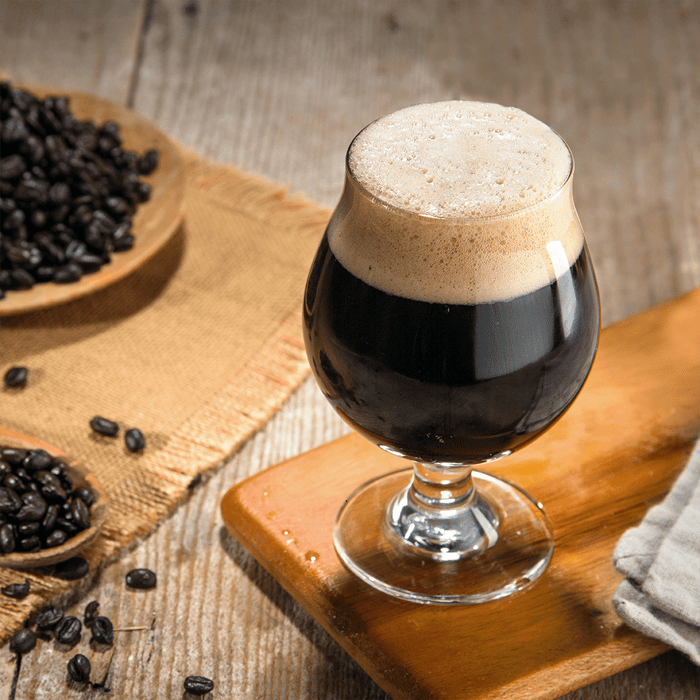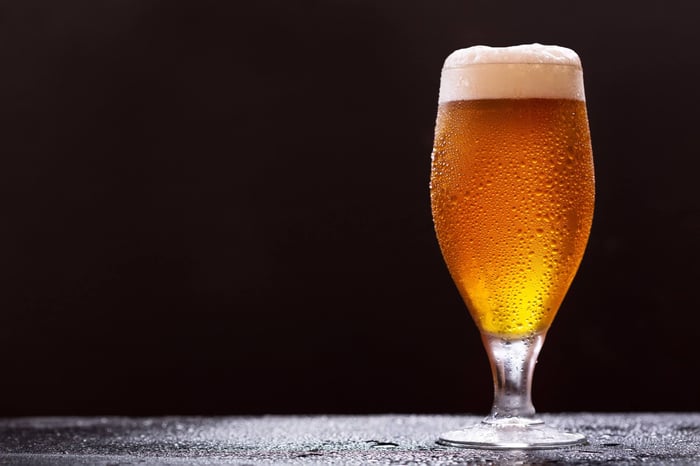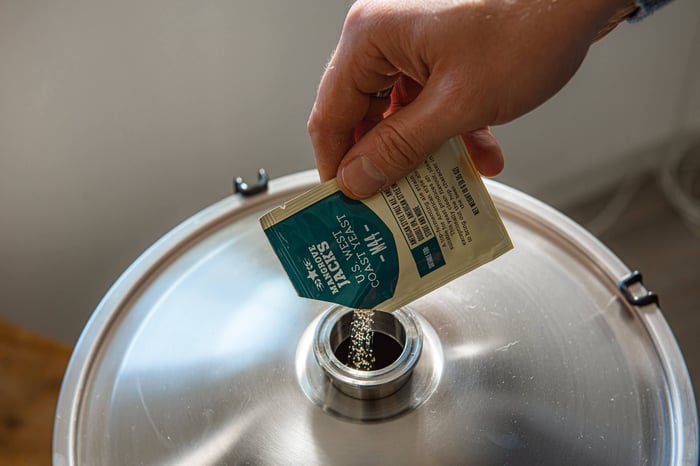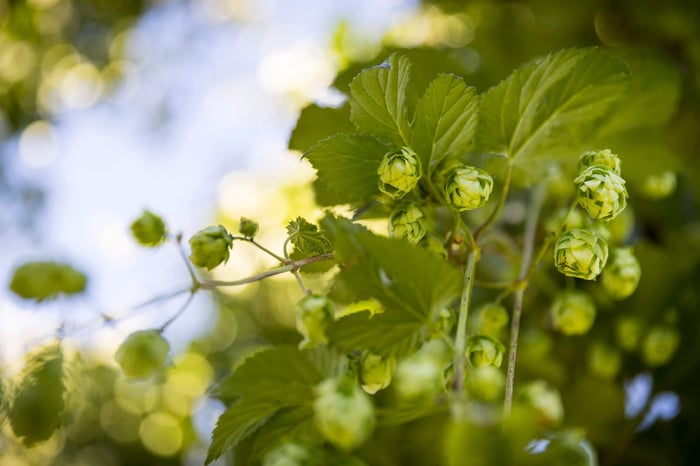Coffee culture runs deep across Europe, from Vienna's coffeehouse traditions to Italy's espresso mastery. Now, we're bringing that same attention to detail and flavour complexity into our brewing. Our senior brewing team shares their comprehensive approach to coffee beer brewing – techniques refined through years of experimentation and countless tastings.
The European Coffee Beer Renaissance
Our fascination with coffee brewing began with Founders Breakfast Stout, a beer that demonstrated the incredible potential of coffee as a brewing ingredient. "The complexity achievable when coffee meets malt is extraordinary," we reflect. "You have these layers of dark chocolate, roasted grain character, and coffee that work in perfect harmony – it's like composing a symphony in a glass."
Our experiments have largely focused on traditional dark styles, but a revelatory coffee lager changed everything. "Imagine the surprise when you're expecting a clean continental lager and encounter this beautiful coffee character. It challenges preconceptions whilst delivering genuine drinking pleasure – exactly what craft brewing should achieve."
Beer Style Selection: Beyond Traditional Boundaries
Traditional Foundations: The Stout Advantage
The natural synergy between stout and coffee is undeniable. European brewing traditions have long celebrated the complex malt characters found in porters and stouts – dark chocolate notes, roasted grain complexity, dried fruit undertones, and nutty characteristics that complement coffee beautifully. Many traditional stouts already possess coffee-like qualities from their malt bills alone, providing an excellent foundation for experimentation.
Brewer's insight: For newcomers to coffee brewing, traditional stouts offer the most forgiving environment for learning extraction techniques and flavour balance.
Progressive Approaches: Light Beer Innovation
European craft brewing increasingly embraces style-blending innovation. Coffee in pale beers represents this progressive mindset – creating sophisticated flavour contrasts that surprise and delight. Consider the success of Schwarzbier or the growing popularity of coffee-infused wheat beers across German craft breweries.
Technical considerations: Coffee bean oils contribute body and mouthfeel whilst potentially affecting foam stability. Coffee's natural bitterness requires careful recipe formulation – particularly crucial in delicate styles like Czech pilsners or Belgian wit beers where balance is paramount.
The key lies in understanding your base beer's character and how coffee will interact with existing flavour compounds.
Coffee Selection: Understanding Your Raw Material
European coffee culture offers incredible diversity – from Italian espresso blends to Scandinavian light roasts, each bringing distinct characteristics to your brewing. Single-origin coffees can provide unique terroir expressions, whilst specialty roasters across Europe offer everything from fruit-forward Ethiopian varieties to chocolatey Brazilian beans.
Professional approach: Cup your chosen coffee first. Understanding its flavour profile, acidity, body, and aftertaste will inform both your beer style selection and brewing methodology. Consider visiting local roasters – many are enthusiastic about collaborating with craft brewers and can provide insights into extraction techniques.
Seasonal considerations matter too. Lighter, more acidic coffees might complement summer wheat beers, whilst rich, dark roasts suit winter warming ales.
Extraction Methodologies: Science Meets Craft
Direct Bean Addition (Dry Beaning)
This technique mirrors dry-hopping principles, adding whole beans directly to your fermenter within sanitised hop bags. Whilst not the most efficient extraction method, it offers excellent control and simplicity.
Protocol: Monitor extraction through regular sampling (using sanitised equipment). Remove beans or rack the beer once desired character is achieved – typically 2-5 days depending on bean quantity and desired intensity.
Cold Extraction Integration
Cold steeping represents perhaps the most controlled method – soaking beans in room temperature water for 24-48 hours before adding the liquid to your fermenter. This technique extracts desirable coffee compounds whilst minimising harsh tannins and excessive bitterness.
Advantage: Complete control over extraction strength and character, with no risk of over-extraction during extended contact periods.
Traditional Hot Brewing Addition
Standard coffee preparation methods can work, though timing and cooling are critical. Hot water efficiently extracts coffee compounds but risks pulling harsh, astringent elements that can overpower your beer's character.
Application: Best suited for addition just before packaging, allowing precise flavour adjustment.
Critical Mistakes to Avoid
We learned the hard way: "Adding instant coffee granules directly to the fermenter is catastrophic. The filtration nightmare aside, the drinking experience becomes unpleasant – nobody enjoys chewing coffee particles between sips. Some brewing lessons stay with you forever."
Timing and Flavour Development
Successful coffee integration requires patience and systematic approach. There's no universal formula – each coffee variety, extraction method, and beer style creates unique parameters.
Systematic approach: When adding beans to the fermenter, sample every 48 hours using sterile technique. Document flavour development to establish patterns for future batches.
For liquid coffee additions before packaging, conduct small-scale trials first. Take measured beer samples and add calculated coffee quantities to determine optimal ratios before scaling up.
Regional Inspiration and Innovation
European brewing traditions offer excellent inspiration for coffee integration. Consider German coffee beer traditions, Belgian experimental approaches, or Scandinavian coffee culture influences. Each region's coffee preferences can inform unique brewing approaches.
Innovation opportunity: Experiment with local coffee roasters and regional coffee preferences. A Norwegian light roast might create something completely different from an Italian espresso blend – both valid, both potentially exceptional.
Your Coffee Brewing Journey
Coffee brewing represents the intersection of tradition and innovation that defines modern European craft brewing. Whether you're crafting a traditional coffee porter or experimenting with coffee-infused saisons, the key lies in understanding your ingredients and maintaining curiosity about new possibilities.
The beauty of coffee brewing lies in its endless variation potential. Every combination of coffee origin, roast level, extraction method, and beer style creates new territory to explore.
L'équipe du Grainfather










